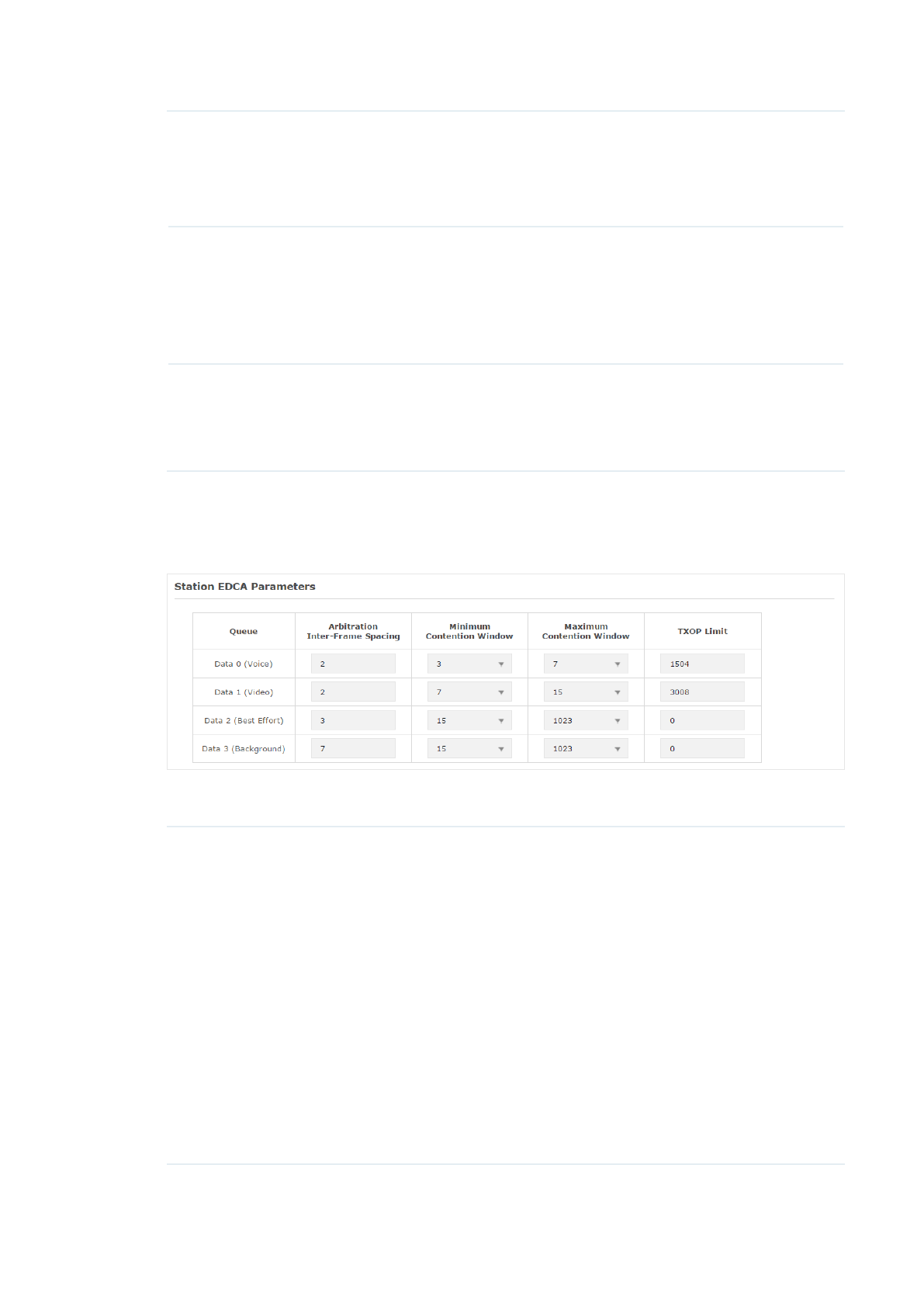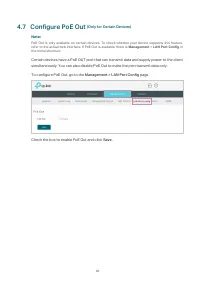Точки доступа TP-LINK EAP653 AX3000 - инструкция пользователя по применению, эксплуатации и установке на русском языке. Мы надеемся, она поможет вам решить возникшие у вас вопросы при эксплуатации техники.
Если остались вопросы, задайте их в комментариях после инструкции.
"Загружаем инструкцию", означает, что нужно подождать пока файл загрузится и можно будет его читать онлайн. Некоторые инструкции очень большие и время их появления зависит от вашей скорости интернета.

57
Minimum
Contention
Window
A list to the algorithm that determines the initial random backoff wait
time (window) for retry of a transmission.
This value cannot be higher than the value of Maximum Contention
Window.
Maximum
Contention
Window
The upper limit (in milliseconds) for the doubling of the random backoff
value. This doubling continues until either the data frame is sent or the
Maximum Contention Window size is reached.
This value must be higher than the value of Minimum Contention
Window.
Maximum Burst
Maximum Burst specifies the maximum burst length allowed for
packet bursts on the wireless network. A packet burst is a collection of
multiple frames transmitted without header information. The decreased
overhead results in higher throughput and better performance.
4. In the
Station EDCA Parameters
section, configure the station EDCA (Enhanced
Distributed Channel Access) parameters. Station EDCA parameters affect traffic
flowing from the client station to the EAP.
The following table detailedly explains these parameters:
Queue
Displays the transmission queue. By default, the priority from high to
low is Data 0, Data 1, Data 2, and Data 3. The priority may be changed if
you reset the EDCA parameters.
Data 0 (Voice):
Highest priority queue, minimum delay. Timesensitive
data such as VoIP and streaming media are automatically sent to this
queue.
Data 1 (Video):
High priority queue, minimum delay. Time-sensitive
video data is automatically sent to this queue.
Data 2 (Best Effort):
Medium priority queue, medium throughput and
delay. Most traditional IP data is sent to this queue.
Data 3 (Background):
Lowest priority queue, high throughput. Bulk data
that requires maximum throughput and is not time-sensitive is sent to
this queue (FTP data, for example).
Характеристики
Остались вопросы?Не нашли свой ответ в руководстве или возникли другие проблемы? Задайте свой вопрос в форме ниже с подробным описанием вашей ситуации, чтобы другие люди и специалисты смогли дать на него ответ. Если вы знаете как решить проблему другого человека, пожалуйста, подскажите ему :)























































































































